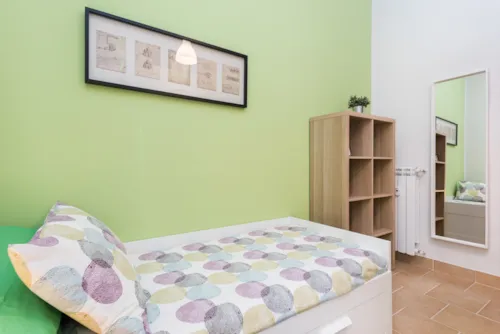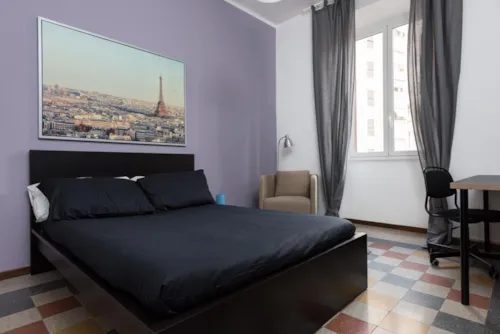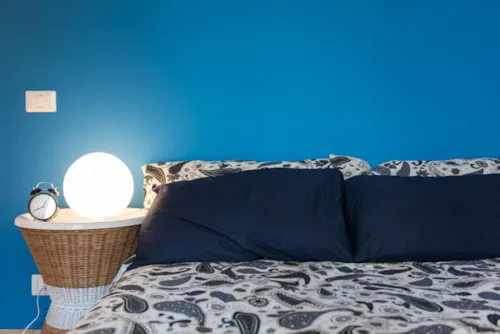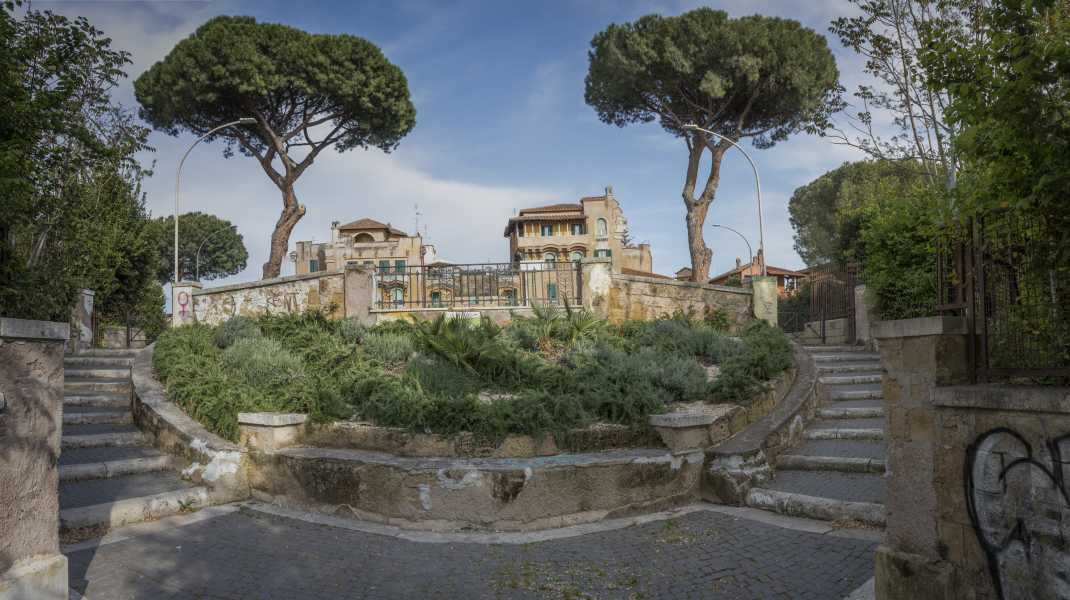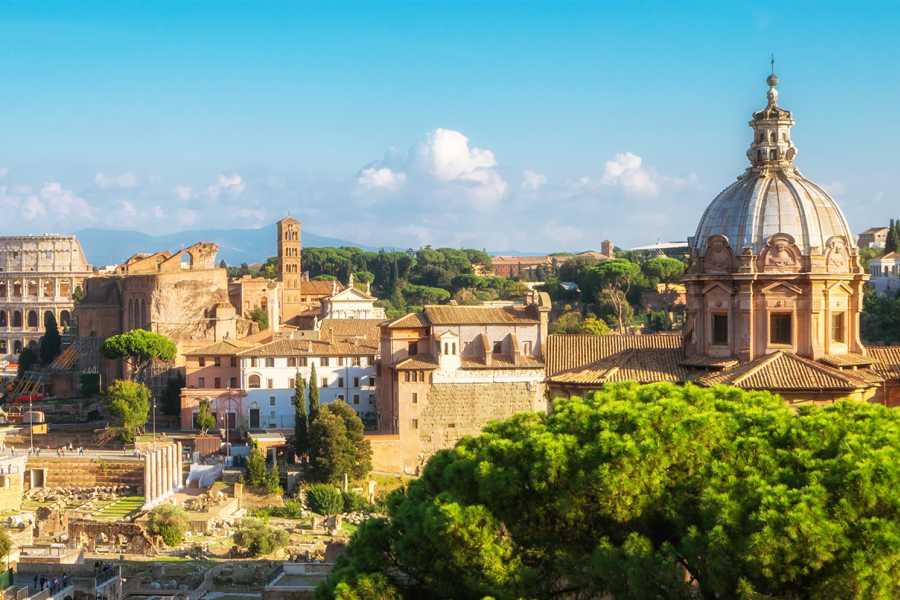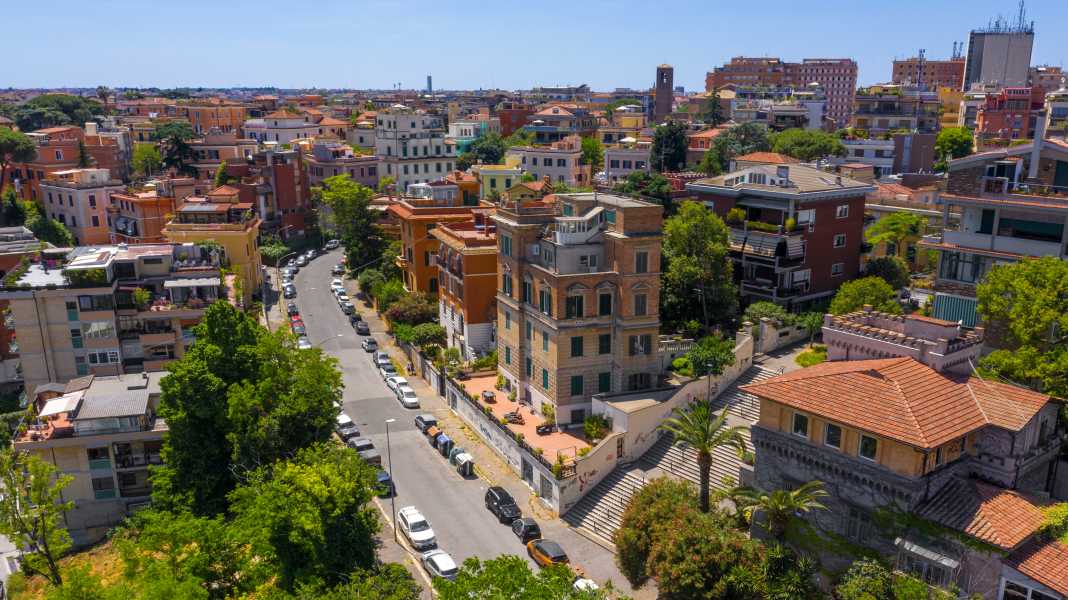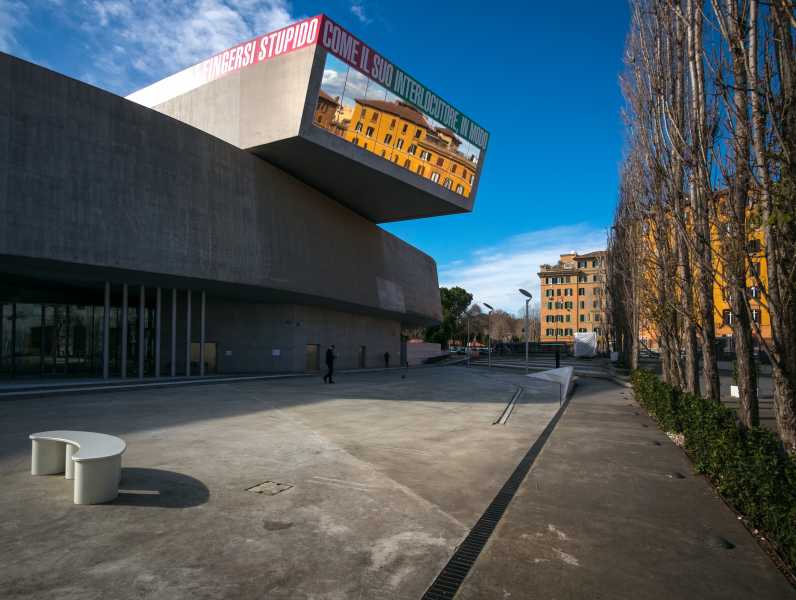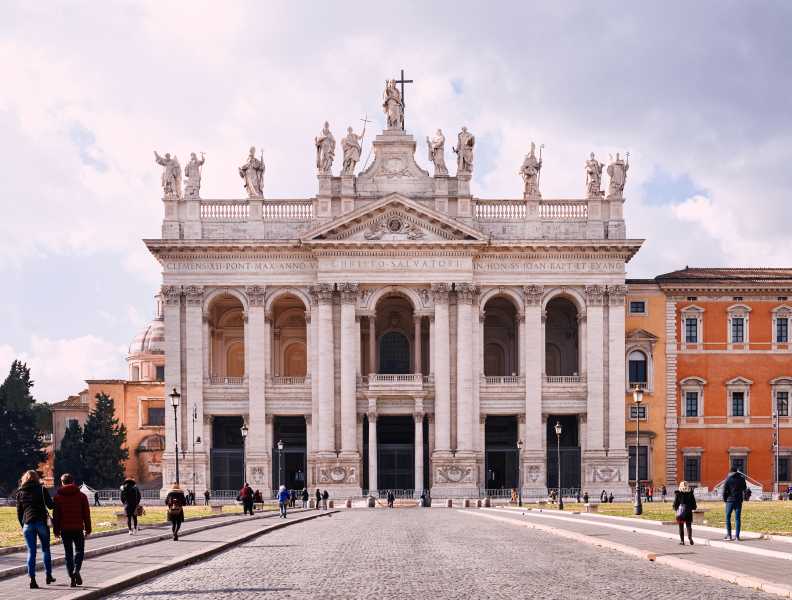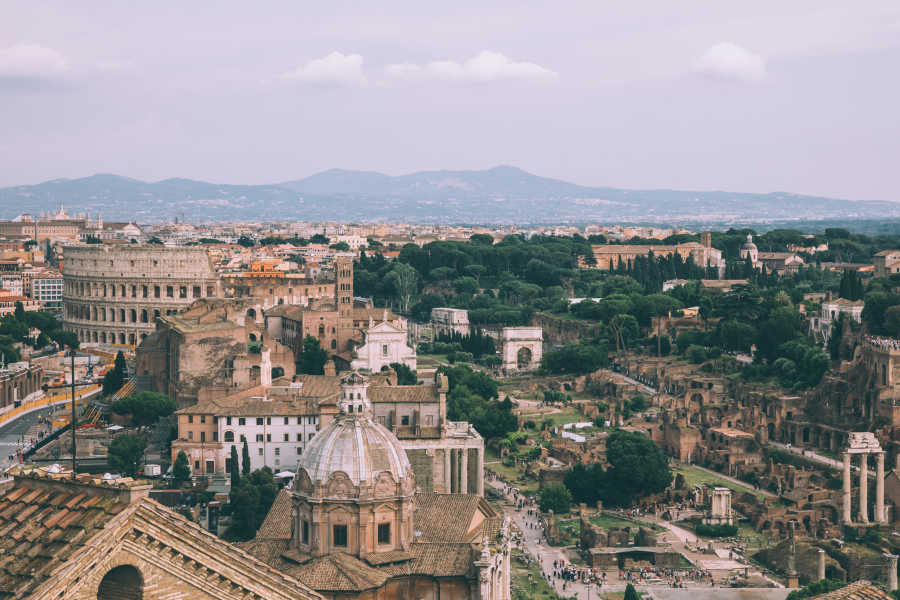
San Lorenzo
The San Lorenzo area in Rome is part of the Tiburtino district, Q. VI, and takes its name from the basilica of San Lorenzo Fuori le Mura, the burial place of saints and popes.
The district starts beyond Porta Tiburtina, the monumental arch, and extends between the Aurelian Walls and the Verano Cemetery. It borders the area of Rome's La Sapienza University and the Pigneto and Esquilino districts. In addition, the Termini and Tiburtina railway stations are a short distance away.
The San Lorenzo district is frequented mainly by young people, due to its proximity to the university, but also because of the rich presence of restaurants, pizzerias, pubs and nightclubs.
The actual urbanisation began in the late 19th century, following the Unification of the Italian peninsula, which decreed urban development in many cities. The first houses that were built in this district were for workers and this made it a dormitory for those who worked in the factories in the area.
In the course of time, it became the centre of the proletariat and, after the bombings during World War II, it was rebuilt and continued to be a working-class neighbourhood. But the process of development and innovation led it to transform itself, despite retaining its working-class soul, into the buzzing reality we see today.
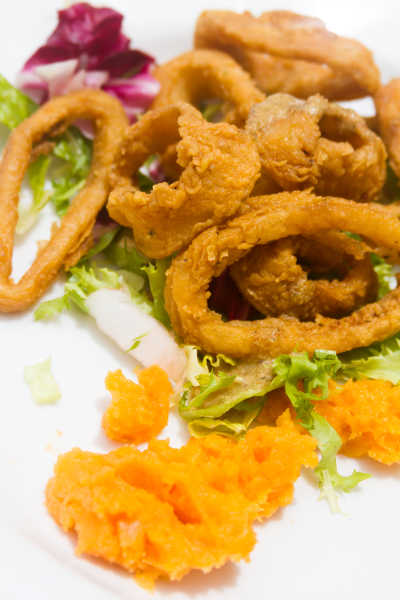
Apartments in San Lorenzo
What to do and see
The San Lorenzo district harbours wonderful historical evidence, a still popular nature and the expression of a new creativity.
The latter can be perceived just by walking through the streets and admiring the colourful murals that adorn the outside walls of the buildings. Indeed, it is a must-visit area for street art lovers. Particularly striking is the wall along Via Sardi on which the silhouettes of 107 women have been painted in memory of murder victims. The streets of San Lorenzo also feature many of the drawings of the famous artist Alice Pasquini, aka Alicè, who was born in Rome.
Another characteristic of the district is the presence of green areas, such as Villa Mercede, a natural corner where you can find a small library and where you can walk, relax, or do some sport.
Among the historical testimonies of great value is the already mentioned Basilica di San Lorenzo Fuori le Mura, also called San Lorenzo al Verano, located at the beginning of Via Tiburtina. In addition, the Aurelian Walls and Porta Tiburtina, which was one of the gateways into and out of the city; the Museum of the Baths of Diocletian, a large bathing establishment in which funerary and decorative art objects from the Aurelian period are now on display.
A historical place but linked to the 20th century, the Casa della Memoria dell'Anpi and the Parco dei Caduti 1943, where the memory of the fallen linked to the events of the Second World War is kept.
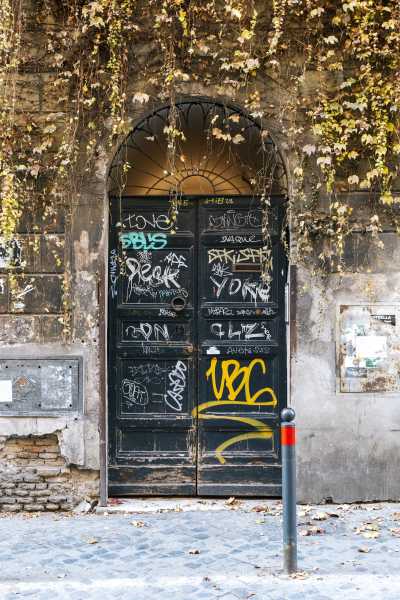
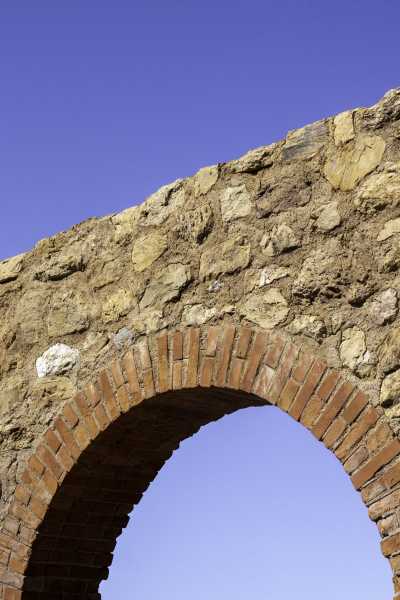
The heart of the San Lorenzo district is Piazza dell'Immacolata, overlooked by the church, which is also a meeting point for young people and home to several bars and clubs. Also worth seeing is Piazza dei Sanniti, a meeting place for men of letters and intellectuals such as Pasolini and Moravia.
In this regard, let us move on to the Pigneto district, much loved by Pasolini himself, which today, after a substantial regeneration process, has become a nucleus of Rome's alternative scene. Strolling through its streets you will see buildings with different architectural styles, vintage and ethnic shops, murals and colourful drawings hidden around every corner.
In addition, you can still see Roman aqueducts or remnants of industrial archaeology such as the Ex-Snia social centre with its artificial lake.
Where to eat and drink
San Lorenzo is also a district of clubs, pubs and restaurants, meeting places for students who live in the area or frequent it for its creative and popular character.
Here you can find trattorias with real Roman cuisine offered according to tradition and at a good price, such as Tram Tram, a family-run tavern in Via de Reti, which also offers Apulian dishes. Osteria a Piedi Pari, in Via dei Volsci, a quiet and friendly place where you can eat well and spend the right amount. La Trattoriola di Luca, really generous portions and gluten-free options. Osteria Pesce Fritto e Baccalà, a few steps from Termini station, where you will find first and second courses especially based on fish. Trattoria dei Colli Emiliani, in the 1960s it was a meeting place for workers, and still has the same decor. Osteria dar Maghetto, here too the location takes you back to the Rome of the 1950s and the flavour of the cuisine is authentic. Osteria da Marcello, to be booked well in advance, especially if you want to go there at weekends, the dishes are simple but made to perfection.
Among the restaurants in San Lorenzo, the oldest is Armando, run by his daughters. Here you still order the antipasti of the day, displayed on the counter as they did in the past, followed by some of the traditional dishes. If you are looking for a vegetarian restaurant, you should definitely try Bonario, which has many and all excellent options. At Pasquino San Lorenzo meat and fish dishes but also pizza from the wood-fired oven; Saltimbocca San Lorenzo, another Roman cuisine restaurant that offers generous and delicious portions.
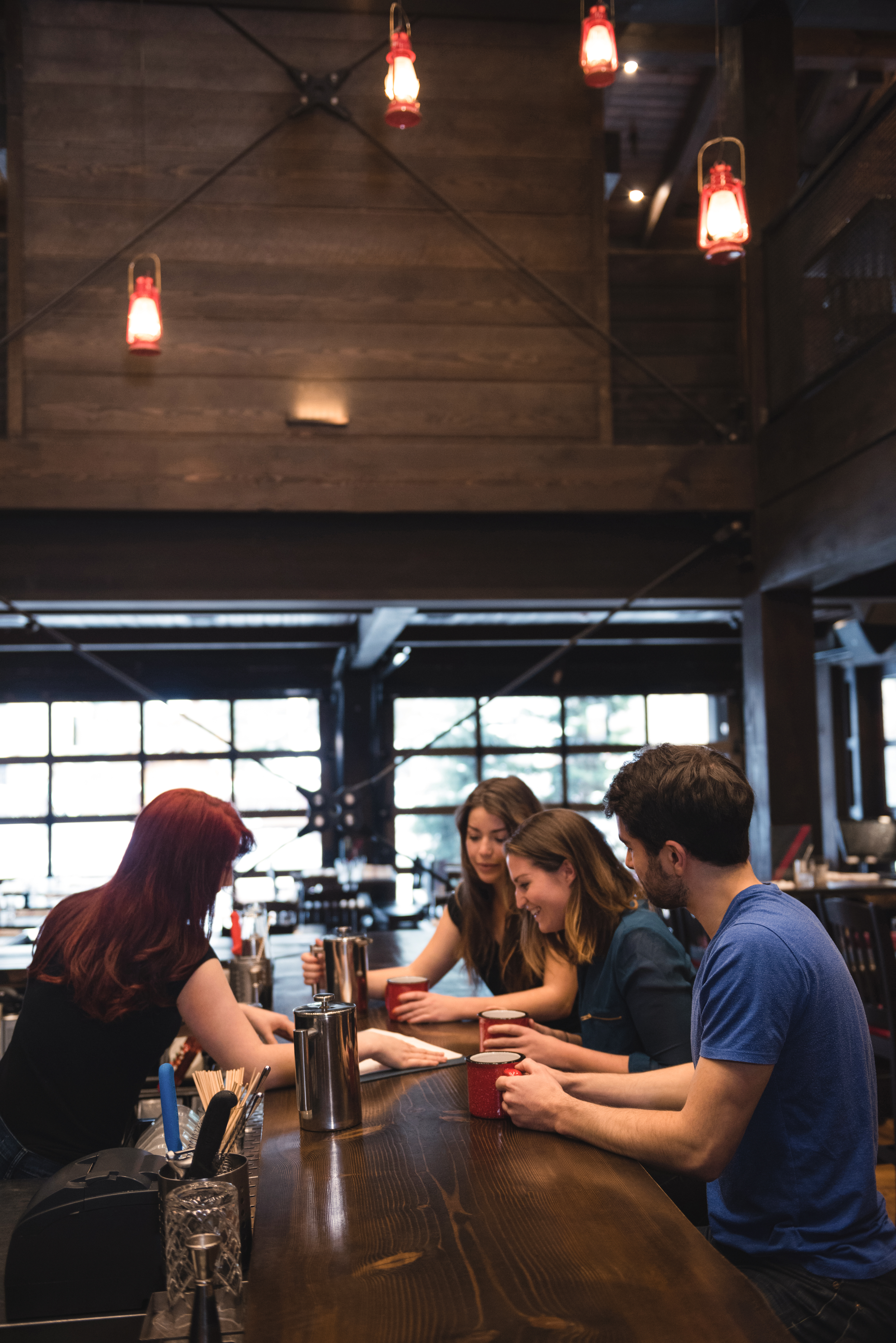
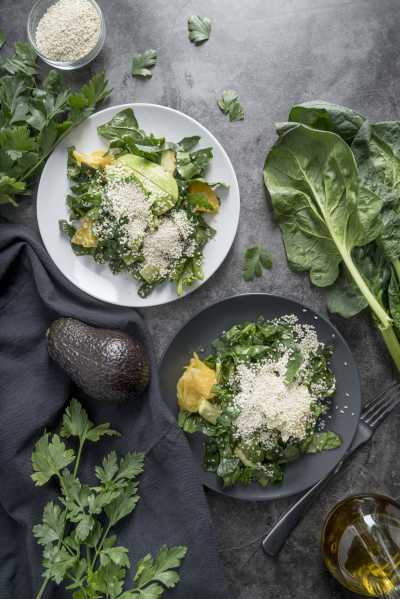
There are also some pizzerias to try: Pizzeria Il Grano, also with wholemeal dough; Farinè la pizza, also with craft beers; Sanlollo excellent pizzas and fried mixes. For international cuisine restaurants: Hamburgheseria, an American-style hamburger bar, or Ferrovecchio, where you will find homemade bread; Kiko Sushi Bar, for Japanese food.
For an aperitif or just a drink, here are the bars in San Lorenzo to go: Malt & Spirit, cocktails, beers and cuisine; Officine Beat, a cocktail bar with soft lighting; Marmo, excellent drinks and also food in an atmospheric setting and a 'secret garden' inside.
We end on a sweet note that cannot be missed: SAID, an old chocolate factory turned bistro, where the desserts are not to be missed, and Gelato San Lorenzo, for excellent ice cream in special flavours.
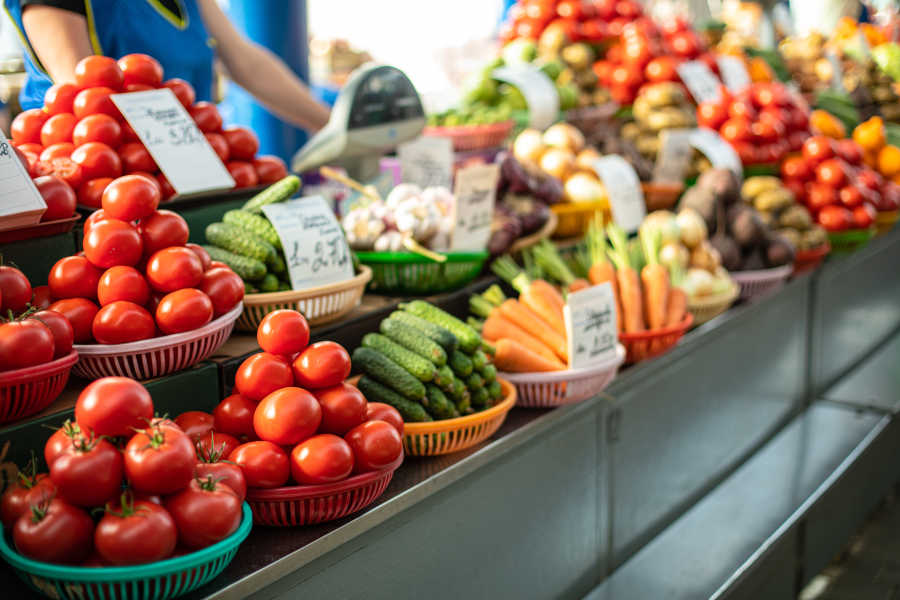
Where to go shopping
What also makes the area cheerful, and dynamic are the San Lorenzo markets, which create a neighbourhood atmosphere and encourage people to share.
The San Lorenzo market itself is very old and continues to stand the test of time. Stalls of all kinds can be found: fruit, vegetables, fish, meat, cold meats and cheeses, from direct growers and organic products. It is located in Largo degli Osci and is open from Tuesday to Saturday, from 7.30 am to 2 pm.
In the heart of San Lorenzo, in Piazza dell'Immacolata, the Eco & Chic Market has already been organised for two consecutive editions. This is a very original market where you can find handicrafts, vintage, and various types of products from costume jewellery to clothing, to home accessories, books, vinyl and collectables.
The neighbourhood is well stocked with shops for all needs: clothing, shoes, accessories, household items, jewellers, florists, sports shops, lingerie shops, furniture shops, and services such as hairdressers and beauticians, veterinarians and so on.
The area is also well provided with supermarkets, shops, and grocery shops. Moreover, it is perfectly connected to the centre and the main shopping streets of Rome.
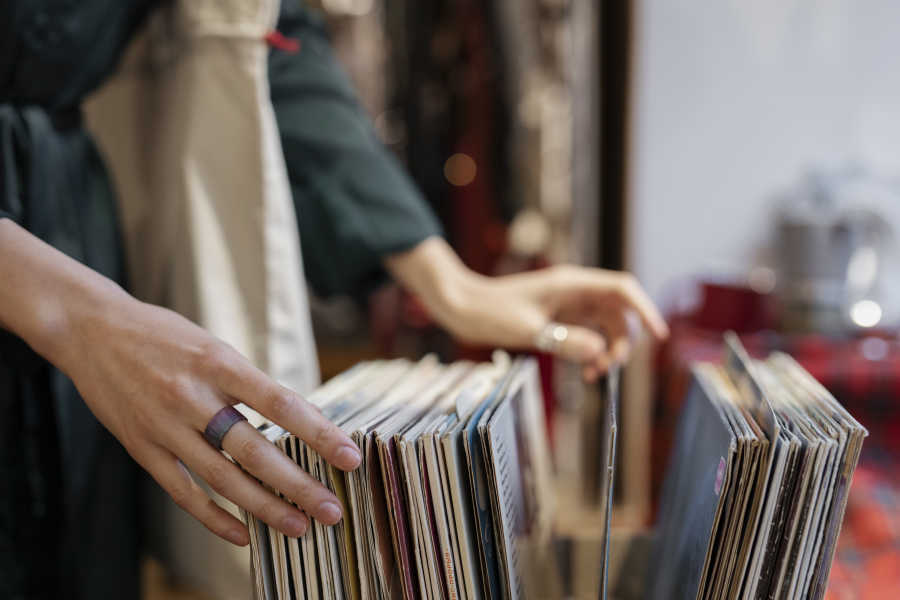
Some questions?
Have more questions?

